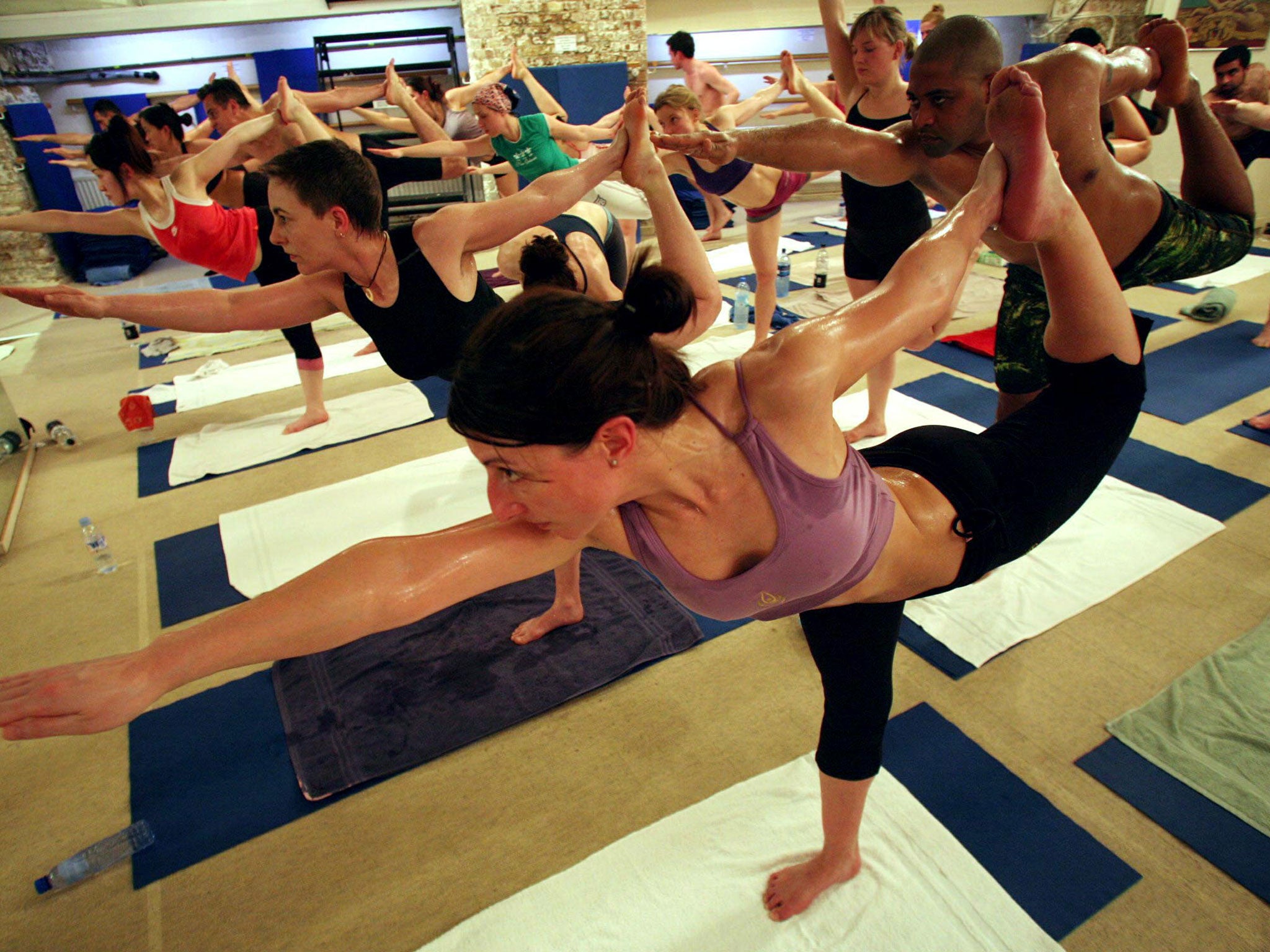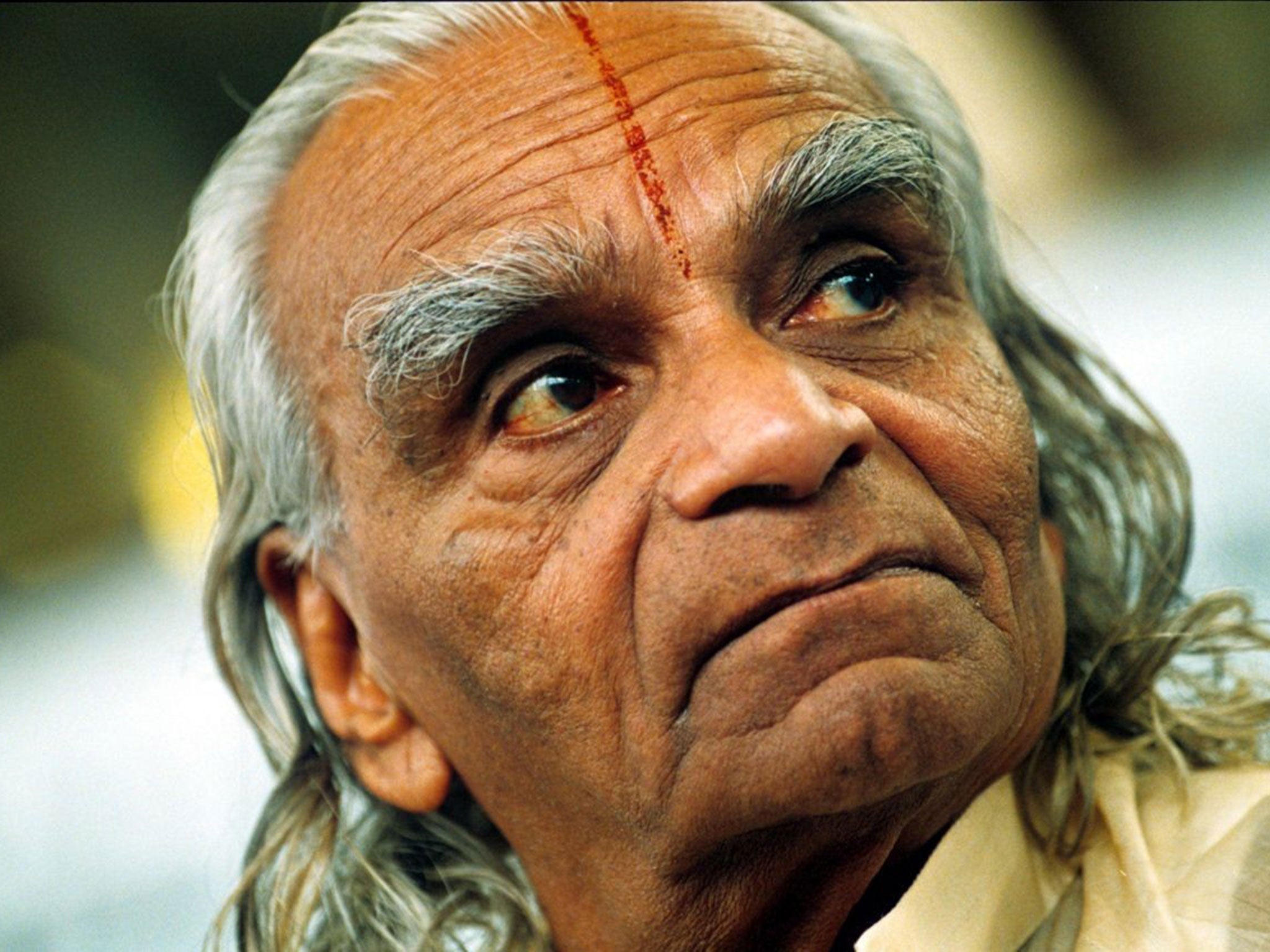Is modern yoga dominated by a culture of backbiting?
BKS Iyengar, one of the founders of modern yoga, has died at the age of 95. Yoga is practised by millions around the world, but modern yoga is markedly removed from the discipline of Iyengar's heyday

Your support helps us to tell the story
From reproductive rights to climate change to Big Tech, The Independent is on the ground when the story is developing. Whether it's investigating the financials of Elon Musk's pro-Trump PAC or producing our latest documentary, 'The A Word', which shines a light on the American women fighting for reproductive rights, we know how important it is to parse out the facts from the messaging.
At such a critical moment in US history, we need reporters on the ground. Your donation allows us to keep sending journalists to speak to both sides of the story.
The Independent is trusted by Americans across the entire political spectrum. And unlike many other quality news outlets, we choose not to lock Americans out of our reporting and analysis with paywalls. We believe quality journalism should be available to everyone, paid for by those who can afford it.
Your support makes all the difference.On Wednesday evening, in a church hall in north London, I sat surrounded by a dozen or so men and women, of various ages, head bowed, in a moment of silence. It was our regular weekly yoga class, only this one was different: that morning, the founder of our particular school of yoga, B K S Iyengar, had passed away. He died aged 95, at a hospital in Pune, western India. Arguably, his death marks the departure of the last great yoga guru.
Of course, the practice of yoga dates back thousands of years, with some placing its origins as early as 3,000BC. It permeated the West in the 1890s, when a Hindu monk, Swami Vivekananda, toured Europe and the United States, delivering lectures and private classes. It wasn't until the second half of the 20th century, however, that yoga went truly global.
Iyengar played a significant part in this. Born in 1918, the 11th child of a schoolteacher from Bellur in south-west India, he took up yoga as a teenager. He had previously suffered malaria, TB and typhoid fever, but, as he practised, he rapidly became stronger. At 18, he began teaching. He developed his eponymous system, which revolves around more than 200 central poses, teaching across Europe in the 1950s, and published Light on Yoga, an international bestseller, in 1966.

He wasn't the only 20th-century yogi to inspire devotees around the world. In fact, the mid-century represented a golden age of yoga tutorship. Sivananda Saraswati, a Hindu spiritual teacher from Kuppuswamy in Pattamadai, in southern India, authored some 200 books from the 1930s to the 1990s. His 1935 treatise, Kundalini Yoga, provided the founding text of the Kundalini school of yoga. Meanwhile, one of the most popular latter-day yoga forms, Ashtanga vinyasa – characterised by fast-paced exercises and pronounced, controlled, breathing – was created by Krishna Pattabhi Jois, a teacher from Kowshika, south India. Both men, in turn, owe a great deal to Tirumalai Krishnamacharya. Lesser-known in the West, it's arguably he who has the greatest claim to being "the father of modern yoga". He taught both Pattabhi Jois and Iyengar at his school in Mysore, south-west India (he was also Iyengar's brother-in-law).
Now yoga is practised by millions around the world, with more than 500,000 practitioners in the UK alone. But if it is more popular than ever, modern yoga is also markedly removed from the discipline of Iyengar's heyday.
The most famous (or infamous) modern yogi is Bikram Choudhury, the 68-year-old creator of Bikram yoga – or "the Master of McYoga", as he has been called. Born in Kolkata, he moved to the United States in the 1970s, founding schools in California and Hawaii. Today, Bikram is taught in 1,600 studios worldwide; reported fans include Andy Murray, Jennifer Aniston and Gwyneth Paltrow. Choudhury caused uproar in the early Noughties with his decision to copyright his sequence of poses – a 90-minute series done in a room heated to 40C. He has attracted criticism for his lavish lifestyle – he reportedly owns a "Royal" Daimler that once belonged to Howard Hughes. More seriously, last year, five women in the US filed claims of rape or sexual harassment against him, the outcome of which is unknown.
Meanwhile, some argue that the modern yoga community has become dominated by a culture of backbiting. In 2011, Shiva Rea, a Californian Kundalini teacher said to have taught Madonna, came under attack for teaching in low-cut trousers and sound-tracking her lessons with dance music. There has been infighting among Ashtanga devotees over attempts by Sonia Jones, the philanthropist wife of New York hedge-fund billionaire Paul Tudor Jones, to market it to well-off Americans. She partnered with Pattabhi Jois' daughter and grandson to launch a line of yoga clothes in 2012, which left so many complaining of commercialisation that Vanity Fair ran a 5,000-word article on the rift, headlined "Whose Yoga Is It Anyway?"
Traditionalists grumble about the influx of new, gym-friendly yoga forms, such as "Rocket yoga", a fast-paced Ashtanga variant created by the late American teacher Larry Schultz in the 1980s, or the "hybrid" yoga forms which have become popular, such as Voga (a mix of Vogueing and yoga). Designer yogawear – such as the phenomenally popular Lululemon range – and luxury yoga retreats are, for some, yet further indication of yoga's over-commercialisation.
Do such criticisms matter? Last year, Iyengar himself defended the practice against them. "It all depends on what state of mind the practitioner is in when he is doing yoga," he said in an interview with Indian newspaper Mint. "I think overall the majority of people who are practising it as a subject are following the right line."
I once confessed to my yoga teacher that I felt too embarrassed to tell some people that I did yoga, middle-class, Eat, Pray, Love cliché that it is. But the fact is, doing a downward dog in my local church hall a few times a week makes me feel happier and – yes – more balanced. If Rocket yoga and a pair of Lululemon pants do that for someone else, what of it?
Join our commenting forum
Join thought-provoking conversations, follow other Independent readers and see their replies
Comments